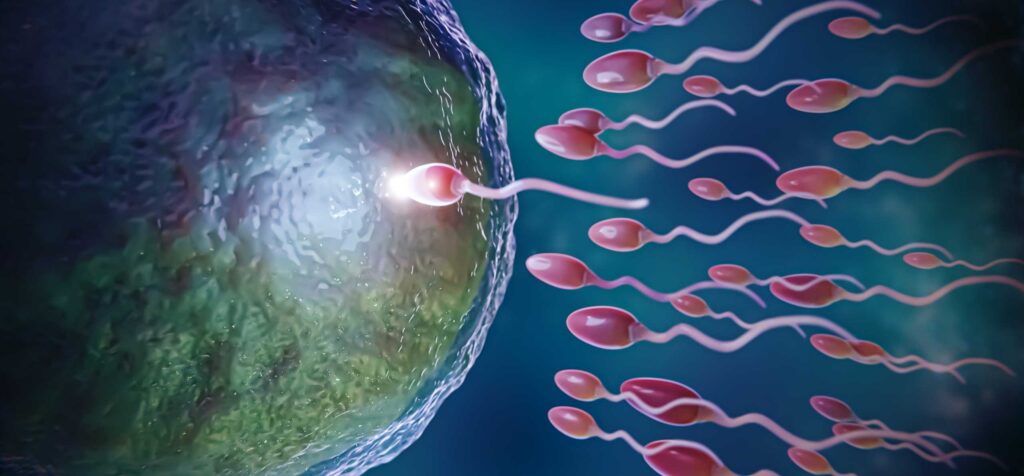Summary
Asthenozoospermia means the proportion of progressively motile sperm (PR) is lower than expected. Motility is crucial: sperm must move forward efficiently through cervical mucus, the uterus, and fallopian tubes to reach the egg. Many men have no symptoms and discover low motility on a semen report. Because motility is highly sensitive to heat, toxins, sleep and stress, and general health, a focused 12-week plan often improves results. Some cases relate to varicocele, previous infection or inflammation, endocrine or metabolic issues, or rare genetic flagellar problems.
Why timelines matter: sperm development takes about 80–90 days from origin to ejaculate, plus transport. Improvements in motility generally appear after sustained changes across at least one full cycle.
Quick Navigation
What is Asthenozoospermia?
It is a lab finding where progressive motility (PR)—the percentage of sperm moving forward effectively—is below reference ranges. Motility is different from count (how many) and morphology (shape). Fertility potential depends on the combined profile of these parameters, not motility alone.
Motility Grading & Reference Concepts
Common Categories
- PR (Progressive): forward, purposeful movement.
- NP (Non-progressive): tail moves but sperm drifts or circles without forward progress.
- IM (Immotile): no movement.
Clinics interpret PR using their own reference ranges. Always compare your result with the lab’s stated intervals and methodology.
Related Measures
- Total Motile Sperm (TMS): total ejaculate × PR; a practical indicator for planning.
- Vitality: proportion alive (helps distinguish truly immotile from non-viable sperm).
- Viscosity & pH: excessive viscosity or abnormal pH can impair movement.
Signs & When to See a Doctor
- Difficulty conceiving despite regular, well-timed intercourse over many months.
- Past history suggestive of drivers: scrotal swelling/heaviness (varicocele), high fevers, mumps orchitis, pelvic infections, or surgeries.
- Seek evaluation if semen is persistently blood-tinged, ejaculation is painful, or there is scrotal pain/swelling.
Causes & Risk Factors
Common Drivers
- Varicocele: enlarged scrotal veins causing heat/oxidative stress that slows sperm.
- Heat exposure: hot tubs/saunas, tight thermals, heated car seats, prolonged laptop on lap.
- Lifestyle: smoking, excess alcohol, low activity, poor sleep, high stress.
- Environmental toxins: solvents, pesticides, certain heavy metals, pollution micro-particles.
- Post-infective/inflammatory changes: past epididymo-orchitis or prostatitis history.
- Endocrine/metabolic: thyroid imbalance, insulin resistance, obesity.
- Genetic/structural flagellar issues: rare primary ciliary dyskinesia or ultrastructural defects.
Risk Factors You Can Modify
- Central obesity and sedentary routines.
- High-heat occupations without cooling breaks or breathable gear.
- Long cycling without periodic standing and breathable padding.
- Dehydration, repeated febrile illnesses, and chronic sleep restriction.
- Use of lubricants that are not semen-friendly.
Diagnosis & Tests
Start with a high-quality semen analysis following lab instructions (2–7 days abstinence, complete sample, timely delivery, temperature control). Abnormal results should be repeated after 2–3 weeks since motility naturally varies. Your evaluation may include:
- Comprehensive semen profile: PR/NP/IM, vitality, viscosity, volume, pH, concentration, morphology.
- Scrotal exam/ultrasound: to assess varicocele or structural issues.
- Targeted endocrine/metabolic review when history suggests.
- Advanced testing (selected cases): sperm DNA fragmentation, oxidative stress markers, or specialized studies for suspected flagellar defects.
Couple perspective: female partner age, ovulation, and tubal factors critically influence strategy and timelines.
How to Read Motility in Reports
Key Points
- Check the lab’s PR% and whether the sample met processing time and temperature criteria.
- Calculate or note Total Motile Sperm (TMS); trends across tests are more meaningful than one value.
- Correlate with morphology, concentration, and vitality.
Context Matters
- Abstinence periods that are too short/long can affect motility.
- Thick, highly viscous semen or abnormal pH can hinder movement.
- Collection loss, non-compatible lubricants, or delayed testing may artifactually lower PR.
12-Week Lifestyle Plan (Motility-Focused, Medicine-Free)
Daily Foundations
- Sleep: 7–8 hours nightly; consistent schedule; dim screens 60 minutes before bed.
- Movement: 150–210 minutes/week of moderate activity + 2 strength sessions; short walks/stands hourly.
- Weight & waist: gradual, sustainable loss if overweight; focus on balanced plates and portions.
- Stress regulation: 10–15 minutes/day of breath work, mindfulness, or yoga; prioritize recovery windows.
- Hydration: steady water intake; extra with heat or exercise.
- Frequency: intercourse/ejaculation every 2–3 days—avoids extremes that may impact motility.
Nutrition Pattern
- Abundant vegetables and fruits of varied colors; legumes and whole grains.
- Nuts and seeds; quality proteins; traditional cooking fats in moderation.
- Minimize ultra-processed foods, deep-fried snacks, and excess sugar.
- Prefer warm, easy-to-digest meals; avoid very late heavy dinners.
- Choose antioxidant-rich whole foods (berries, citrus, tomatoes, leafy greens) as part of meals.
Heat & Toxin Controls
- Keep laptops off the lap; take cooling breaks in hot environments.
- Wear breathable underwear; avoid prolonged tight thermals.
- Limit sauna/hot-tub use during the plan; be cautious with heated seats.
- Reduce tobacco and alcohol; ensure protective gear/ventilation for workplace exposures.
- Store food/water in glass/steel when possible; avoid reheating in plastic.
- Use semen-friendly lubricants if needed.
Follow-Up
- Re-test semen after ~12 weeks; compare PR, TMS, vitality, and viscosity.
- Adjust the plan with your clinician based on trends and findings.
Ayurvedic Care
Using classical assessment and Nadi Pariksha, care focuses on balancing Vata and Pitta, supporting agni (digestion), and building ojas (vitality). The aim is to reduce heat and oxidative strain while nourishing reproductive tissues across the full sperm cycle.
What Your Plan May Include
- Rasayana/Vajikarana routines: physician-guided diet and daily practices that support motility.
- Dinacharya: sleep timing, meal regularity, gentle exercise, and calming breath practices.
- Panchakarma (when indicated): approaches such as Basti-based protocols for balance and calming therapies like Shirodhara.
Integration Principles
- Combine routines with modern diagnostics and regular semen tracking.
- Emphasize whole-food nourishment over extreme diets.
- Address couple factors and timing for realistic expectations.
Lab & Collection Pitfalls That Lower Motility
- Too short or too long abstinence period before the test.
- Partial sample loss during collection (first fraction is sperm-rich).
- Non-compatible lubricants during collection.
- Delay between ejaculation and analysis; exposure to cold/heat during transport.
- Very viscous samples not processed per protocol.
When to Consider Assisted Options
If progressive motility remains low despite a full improvement cycle, or if timing is urgent due to partner factors, assisted techniques can help:
- IUI: processing and placing motile sperm closer to the egg in selected scenarios.
- IVF/ICSI: laboratory methods that can work with low PR; decisions are individualized by the fertility team.
- Varicocele correction: when clinically significant and confirmed by a specialist.
Need Personalised Guidance?
Education helps, but a tailored evaluation makes the difference. For a confidential plan aligned with your profile—and strictly medicine-free content policy—book a discreet consult:
Doctors for Asthenozoospermia
Dr. Ranjeet Singh
BAMS, DMR — Male Infertility & Sexual Health
Focus: male factor infertility (motility, count, morphology), PE/ED, and couple-centric planning with integrative Ayurvedic + modern diagnostics.
Dr. Megha Yadav
BAMS — Female Infertility & PCOS/PCOD
Coordinates female-side evaluation so ovulation timing and uterine factors align with your improvement plan.
Disclaimer
This page is educational and not a substitute for in-person medical advice, diagnosis, or treatment. Any procedures or assisted options are discussed with your specialist based on individual findings. In line with policy, no medicines are named.
Written By : Dr. Ranjeet Singh


